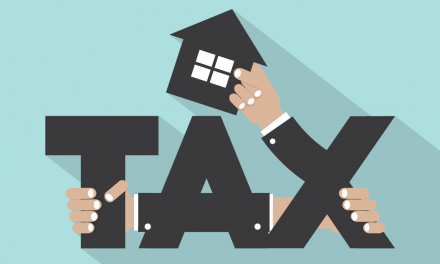The New York Times reports housing prices in the U.S. flatlined in October, 2009 despite low mortgage rates and a homebuyer’s tax credit. These incentives, which should have been powerful enough to continually prop up national prices, were not enough to combat the price depression created by approximately 3.2 million new and existing unsold single-family residences (SFRs) that month.
A combination of high unemployment and the failure of the current administration’s foreclosure prevention measures will result in an estimated 2.4 million foreclosures this year.
Considering the fresh wave of foreclosures expected, what will happen to prices in the coming months when the Federal Reserve Bank (The Fed) begins to raise interest rates and the government tax credit extension has expired?
Prices are predicted to fall by another 10% nationwide.
Another price drop would push more homeowners into underwater situations.
The only timely and effective way to deal with an underwater home – negative equity and homeowner insolvency – is to reduce the principal balance on the home loan, or in other words, a cramdown.
But lenders have continued to resist the reportable loss on the loan created by a cramdown. They prefer the slow bleed of extensive nationwide foreclosure, refusing to acknowledge the market value of the mortgages, which is less than the value of the home which secures the loan.
Loan modifications are not working.
There is only cure for underwater homes and the nations and California’s underwater housing woes: the cramdown.
first tuesday take: While the nation saw a price flatline in October, the home sales did increase in California, mostly thanks to speculators who have been chasing the market to get ahead of the homebuyer, which runs up the price of housing.
[For a look at California’s October sales increase, see the November 2009 first tuesday article, Some perspective on the recent increase in home sales volume.]Otherwise, there is little to say that first tuesday has not already been saying since the beginning. Hopefully America will wake up, and demand what is required to bring this nation back to stability.
For more reading on virtues of cramdowns, see:
- the January 2010 first tuesday article, Bankruptcy’s often overlooked tie to homeownership;
- the January 2010 first tuesday article, To default, or not to default: “that is the question”;
- the December 2009 first tuesday news blog, Wells Fargo: ‘leading the way’ in cramdowns?;
- the December 2009 first tuesday news blog, The House rejects “cramdown” measure: more foreclosures on the way;
- the November 2009 first tuesday news blog, Study affirms foreclosure counseling programs get modifications.
- the November 2010 first tuesday article, The speculative price (dis)advantage: negative equity and the Great Liquidation;
- the November 2009 first tuesday news blog, Congressional Oversight Panel advises further government action to stem defaults;
- the October 2009 first tuesday news blog, Modifications with principal reductions trickle in;
- the October 2009 first tuesday news blog, Will California see a high-end housing crash next year?;
- the October 2009 first tuesday article, Negative Equity and Foreclosure;
- the September 2009 first tuesday article, Riverside Town Hall Discussion of the Foreclosure Prevention Act (ABX2 7);
- the August 2009 first tuesday news blog, Debt-forgiveness: a ladder out of the negative equity pit;
- the May 2009 first tuesday news blog, A housing crisis and the government walk into a bar…;
- the May 2009 first tuesday article, Credit after the NOD: the lender’s motivation to re-lend;
- the May 2009 first tuesday news blog, Senate defeats bankruptcy cram-down provision;
- the May 2009 first tuesday article, A helping hand for negative equities;
- the February 2009 first tuesday news blog, Cramdown: distressed homeowners’ shot at salvation or disguised menace?; and
- the February 2009 first tuesday news blog, Mortgage modifications are ineffective without a cramdown.
Re: “This Year’s Housing Crisis,” from The New York Times














I want to cramdown too.
Nick, I respectively disagree. You are wrong, wrong, wrong.
I don’t know what you’re smoking or who’s paying your check.
Prices NEED to fall PERIOD. Completely over-inflated in the last decade.
Your cramdown hurts the good people who are saving, trying to afford to buy a home legitimately.
You are rewarding the SAME bad behavior that got us in to this mess to begin with.
Prices need to come down to levels where the median income can afford to qualify. Since incomes are dropping, prices need to drop.
I don’t believe there will be any change. Foreclosures are a new-found industry for bank servicers, their associated RE agents and cash investors. The servicers make huge profits from NOD fees, title fees for the take over and the new buyer, late notice fees, and often appraisals and insurance fees to name a few. Cash investors can pick up large numbers of rentals at half price -(unfortunately turning owner occupied neighborhoods into rental neigborhoods). I believe the banking industry is totally behind the latest legislation involving the Bankruptcy cram-down ruling as well as all the new laws to eliminate loan officers and their brokers (in short, wholesale lending). As I see it the loss of equity at the time of foreclosure falls on Fnma or Freddie Mac. The govt. just recently stated they would bail out Fnma no matter how far in debt they fell in the future.Therefore the ultimate losers are the taxpayer and the homeowner who is put out on the street. Unfortunately neither of these two groups have lobbyists. Our only recourse is to en-mass, take our money out of big banks and move it to small local banks. This might get someone’s attention.